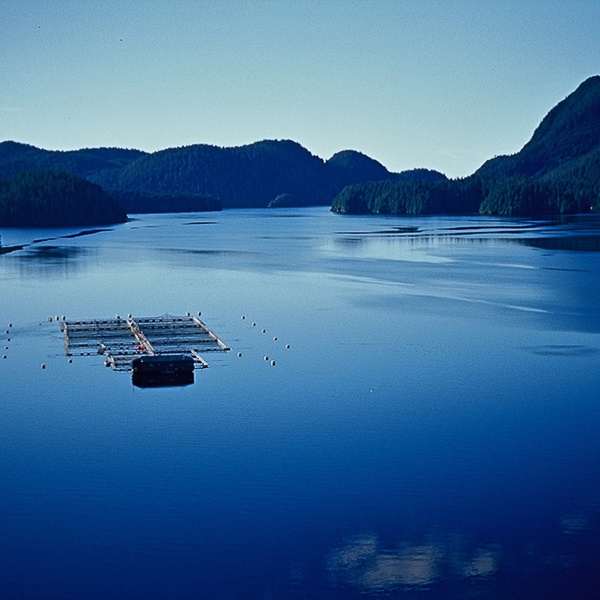A new era for salmon farming in British Columbia
Deal protects wild salmon stocks, recognizes traditional First Nations rights and paves the way for future expansion of B.C.’s sustainable salmon farming industry
By Fabian Dawson
SeaWestNews
An agreement between three First Nations and the B.C.government will set the stage for an orderly transition of 17 salmon farms in the Broughton Archipelago and provide a pathway for increasing sustainable aquaculture operations in Canada’s west coast.
The transition plan comes out of a process undertaken by the B.C. Government and the ‘Namgis First Nation, the Kwikwasut’inuxw Haxwa’mis First Nations and Mamalilikulla First Nation, following a letter of understanding (LOU) regarding the future of finfish aquaculture in the Broughton.
The plan has been agreed to, by the two fish farm operators in the Broughton: Marine Harvest Canada and Cermaq Canada.
The Broughton Archipelago is a group of islands on the northeastern flank of the Queen Charlotte Strait on the coast of British Columbia, Canada.
“Our governments have come together to help revitalize and protect wild salmon, and provide greater economic certainty for communities and local workers. These are the kinds of gains true reconciliation can deliver,” said Premier John Horgan.
Horgan also said his government will allow more ocean-based fish farms in B.C., provided environmental concerns are addressed and consent is obtained by First Nations governments in the proposed areas.
“The companies are here to stay. Indigenous communities are prepared to work with them to find a path forward. So we are celebrating that path today,” Horgan told the VancouverSun.
Farm-raised salmon is B.C.’s highest valued seafood product, the province’s top agricultural export, and generates over $1.5-billion towards the B.C. economy, resulting in over 6,600 jobs.
Marine Harvest Canada also announced today it intends to begin discussion with interested First Nations, provincial and federal governments to develop an ocean-based containment pilot project.
This project will add to the extensive research and development Marine Harvest currently has underway in Norway. Cermaq is also looking at a similar operation.
“First Nations have expressed great concern regarding the wild salmon stocks in the area. Every employee of Marine Harvest Canada shares the same concern. This plan will see capacity for First Nations Monitoring and Salmon Restoration increased, we believe this is long over-due,” said Marine Harvest Canada managing Director, Dr. Diane Morrison.
“We respect the traditional Rights Holders, and acknowledge the importance of a healthy wild salmon population in the Broughton Archipelago. In the spirit of reconciliation, we are listening and learning about the important status that wild salmon have in Indigenous communities from a social, spiritual, and traditional viewpoint,” said Cermaq Canada’s Director of Sustainable Development, Linda Sams.
Recommendations endorsed in the letter of understanding (LOU) regarding the future of finfish aquaculture in the Broughton, include;
- creating an orderly transition of 17 farms, operated by Marine Harvest Canada and Cermaq Canada, from the Broughton area between 2019 and 2023;
- establishing a farm-free migration corridor in the Broughton in the short term to help reduce harm to wild salmon;
- developing a First Nations-led monitoring and inspection program to oversee those farms during the transition, which will include compliance requirements and corrective measures;
- implementing new technologies to address environmental risks including sea lice; immediate action to enhance wild salmon habitat restoration and rehabilitation in the Broughton;
- confirming a willingness to work together to put into place the agreements and protocols necessary to implement the recommendations, including continued collaboration with the federal government; and securing economic development and employment opportunities by increasing support for First Nations implementation activities and industry transition opportunities outside the Broughton.
Marine Harvest has an annual 12,000 tonne harvest of salmon raised on 12 farms in the area that generates approximately $200-million towards the economy, 461 jobs and includes $51-million spent with suppliers, of which 174 are located on northern Vancouver Island.
As a first step in this transition, Marine Harvest Canada will withdraw its tenure replacement applications for Arrow Passage and Glacier Falls, and relinquish the tenure at Potts Bay.
Cermaq Canada will be removing its Cliff Bay farm and Burdwood farm, which are located near an important wild salmon migration route.
On a tenure-by-tenure basis, the recommendations provide for an orderly transition of 17 fish-farm sites between 2019 and 2023. Some farms will be immediately decommissioned; some will remain in operations for various terms (two to four years). By the end 2022, 10 farms will have ceased operations. The remaining seven farms will cease operations, unless First Nations-industry agreements and valid Fisheries and Oceans Canada (DFO) licences are in place by 2023.
“Our Nations, together with many British Columbians, have been raising serious concerns about this industry for decades. We are grateful that governments and industry are finally starting to listen and work with us to find solutions that aim to protect and restore wild salmon and other resources,” said Chief Robert Chamberlin, Elected Chief Councillor of the Kwikwasut’inuxw Haxwa’mis First Nation and First Nations’ Chair of the Broughton steering committee.
“There is much that still must be done, but these recommendations are a significant positive step in a better direction,” he said.
RELATED LINKS:
First Nations’ eco-knowledge vital for new salmon policy
First Nations crucial in Canada’s new approach to aquaculture

